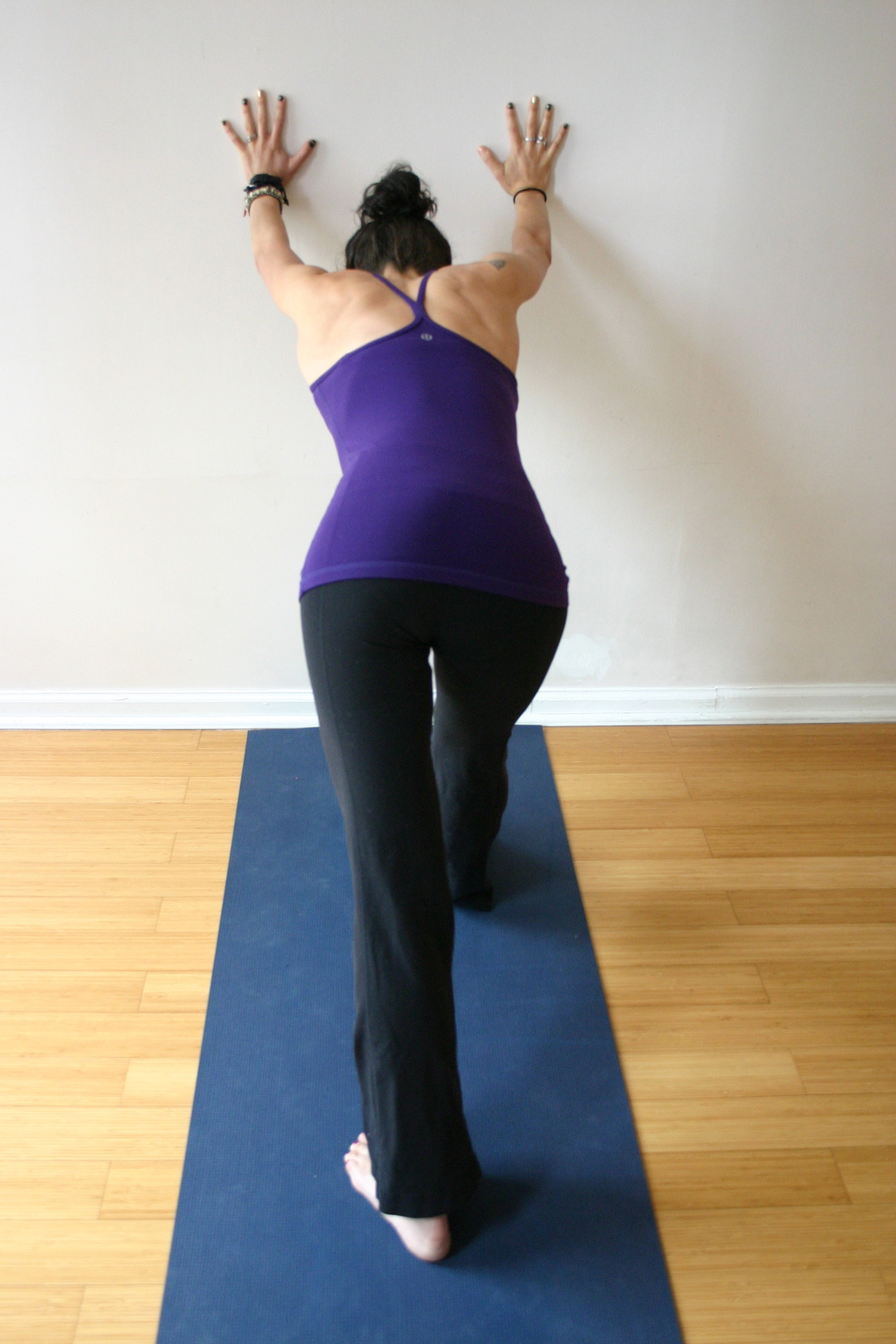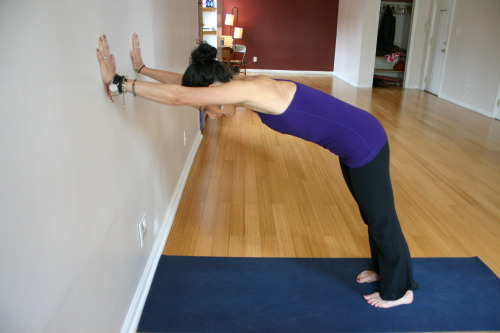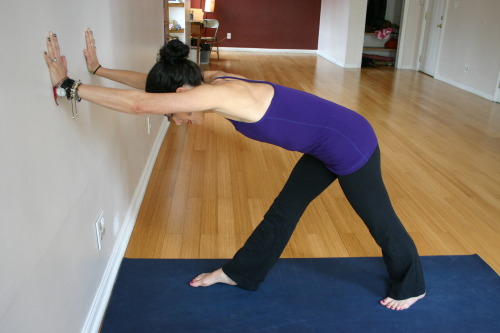We asked one of our favorite teachers, Stephanie Creaturo, to help us with some post run yoga. Her take on yoga, the body and runners always blows us away. Need to slow down, relax, stretch or feel good after a run? Head to Mala Yoga. Every single teacher knows their stuff and cares.
As a yoga teacher and a runner, I get asked a lot what are the best stretches to do after a run. There’s a good chance my fellow runner will also say “I don’t have a lot of time to stretch.” I get it! There are a million stretches out there and even more yoga poses. And training for a race takes a lot of time. What’s a runner to do?
I totally believe that running and yoga can peacefully co-exist! I hope you can check out an appropriate-level class for you at your local yoga studio – many studios (like mine) offer classes just for athletes or runners. Even if you go once a week, the teacher will lead you through a variety of poses, some of which you may be familiar with, some of which you may not. Either way, you’ll certainly stretch out those muscles used in running, but you can also be inspired to get out of your stretching rut! Yoga mixes up how it challenges the muscles in the body, which is great conditioning for the body and the mind.
Here’s one of my favorite poses to teach runners and to do after a long run. (Note, I don’t use the words “stretch” and “pose” interchangeably; I can think of a million different things when I’m stretching. When I’m engaged in a yoga pose, my attention is squarely placed on my breath and how my breath is guiding my physical alignment. But no matter what you do post-run, yoga or stretching, your body will thank you by staying healthy!)
It is called Parsvottonasana, or intense side stretch. Many yoga teachers call it “pyramid pose” because of the shape your body takes once its in the final pose. I find it to be a wonderful post-run balm for the backs of my legs, my low back, and my spine.
I love to do this pose with my hands on a wall or a park bench. By pressing my hands into a wall or the edge of a bench, I can integrate my arms to my shoulder sockets and let my shoulders & hips be aligned while I lengthen the muscles at the back of my legs.
Let’s get into the pose on the right side first!
1. Place your hands on a wall or the edge of a bench. Keep your ears in line with your upper arms as you walk your hips & feet back in space, bringing the spine parallel to the ground beneath you.
2. Step the right foot towards the wall or the bench. The right toes point straight forward. Keep the right knee straight and the right heel in line with the right sitting bone. The right hip draws straight back in space as you firmly press the four points of the right foot into the ground beneath you.
3. Squiggle the left leg back a bit, angling the left foot at a 70 degree angle. Zipper the outer edge of your left foot to the ground as you firmly press the four points of that foot down. The left heel is in line with the left sitting bone. Your legs are now asymmetrical to each other.
4. The hips are level in space – imagine that you’ve placed your open bottle smack in the center of the pelvis and you don’t want it to slip to the floor, spilling all your water.
5. Push your hands into the wall or the bench, which will help take your hips and thighbones back in space. Keep firming the bottoms of the feet to the ground as you tack your sitting bones to your heels.

6. Make sure you’re not locking your knees! Of course, if the hamstrings are singing an opera to you, then bend that right knee. Otherwise, engage the quadriceps to the thighbones and make sure you’re not rolling to your outer right foot.
7. Breathe in Parsvottonasana for at least five breaths, working up to 10 deep breaths. To exit the pose, lift your gaze, step your left foot forward to meet your right foot, then repeat on the second side.
Now that you’re in the shape of a pyramid, you may wonder why it’s called intense side stretch. Good question! Most of us would call it calf or hamstring stretching pose. But the name is a great reminder to keep the sides of the waist long and the abdominal area engaged as we stretch our legs.
Remember, yoga poses can take a zillion different shapes and your body is as unique as your fingerprints! When doing a post-run pose, make sure you’re stretching the belly of the muscle and not at the junction your muscles connect to the bone. Also, use resistance – it is a great tool to keep the muscles, bones & connective tissue speaking the same language post-run.
Lastly, make sure to budget a few extra minutes into the end of your run to stretch or strike a pose - it’s a better than striking out due to injury or exhaustion, especially if you’re training for a race.


